Walking through Palermo’s narrow streets feels like flipping through a living history book. Every corner seems to whisper stories from the city’s wild past.
I’m always amazed at how this Sicilian capital blends so many layers of influence from its conquerors. Palermo stands out as one of the world’s most unique cultural melting pots, where Arab, Norman, and Spanish heritage have mixed for nearly a millennium. It’s honestly something you have to see to believe.
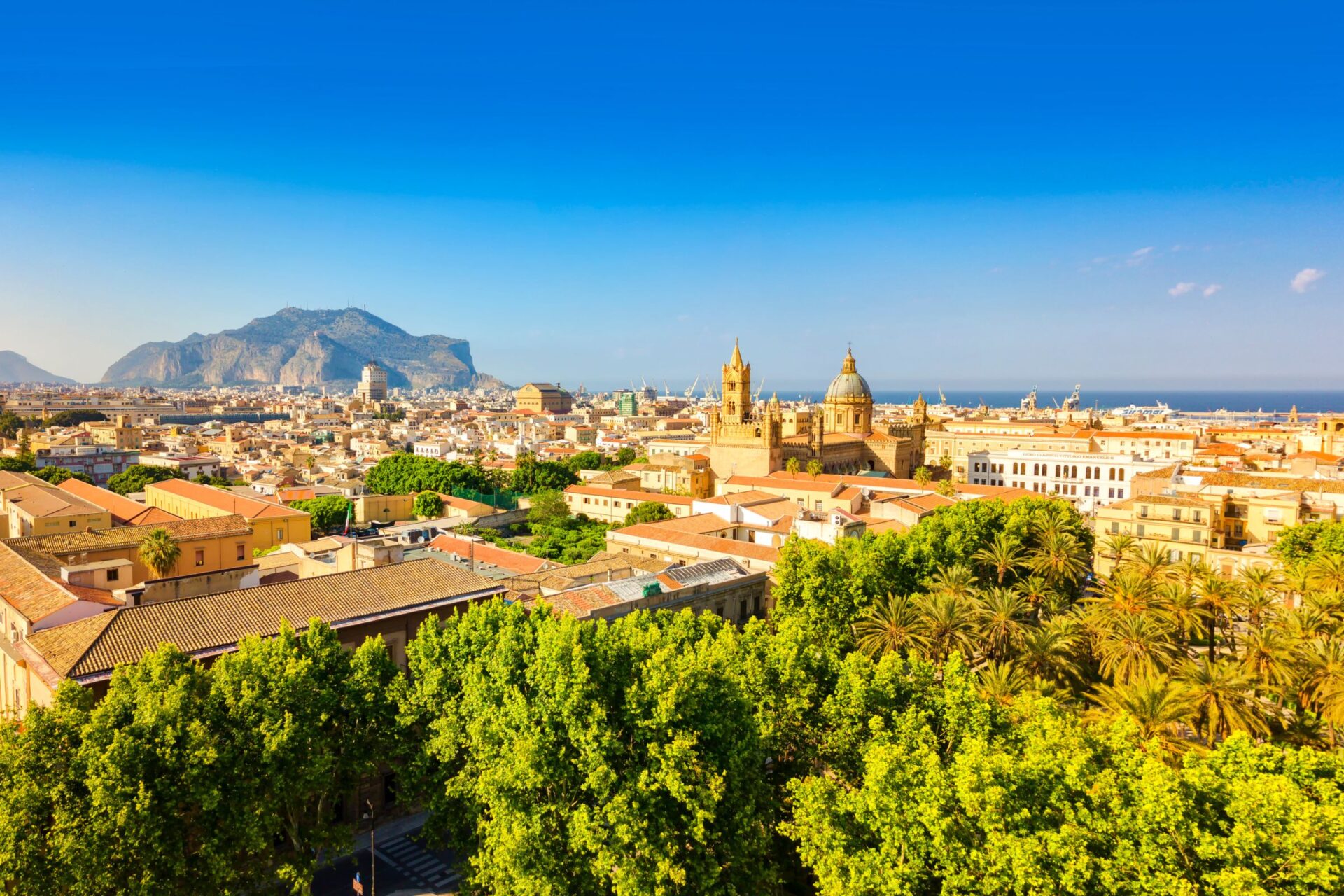
You can read the city’s story right in its architecture. Arab-Norman palaces, like those that earned UNESCO World Heritage status in 2015, sit next to Spanish-influenced piazzas where locals gather for a chat or a coffee.
The Zisa Palace really nails this blend. It started as a Norman king’s power symbol, but Arab design is everywhere you look—still captivating visitors after all these centuries.
But it’s not just the buildings. These influences sneak into daily life, too. Palermo’s food scene is basically a delicious history lesson.
Market vendors shout in dialects shaped by centuries of exchange. Every meal tells a story, from Arab-inspired street foods to Norman recipes handed down through generations.
Palermo’s History as a Cultural Crossroads
Palermo has seen more conquerors than most cities could count. Each one left its mark and shaped the city’s identity.
Its spot in the Mediterranean made it a prize for empires, weaving a cultural tapestry you can still see today.
The Ancient Roots: Greek and Roman Influences
The Phoenicians founded Palermo around 734 BCE as a trading post. They picked this spot for its natural harbor and strategic position in the Mediterranean.

Back then, the city went by “Ziz” and quickly became a key commercial hub.
When the Greeks arrived in Sicily, they brought their architecture and philosophy. Palermo stayed mostly Phoenician, but Greek influence seeped into the surrounding areas.
Archimedes, the famous mathematician, lived in Syracuse, just down the coast.
The Romans took Palermo from Carthage during the Punic Wars. Under Roman rule, the city—then called “Panormus”—grew with straight streets, forums, and public buildings.
This era made Palermo an administrative center for Sicily.
Arab Rule and the Islamic World in Sicily
Arab forces swept into Palermo in 831 CE, kicking off one of the city’s most transformative periods. They renamed it “Balarm” and set up their capital here.
The Arabs brought advanced farming, introducing oranges, lemons, and sugar cane. These crops changed Sicily’s economy forever.
Palermo flourished with new irrigation systems and agricultural know-how.
You can still spot Arab influence all over Palermo’s architecture. The red domes of churches like San Giovanni degli Eremiti started out as mosques.
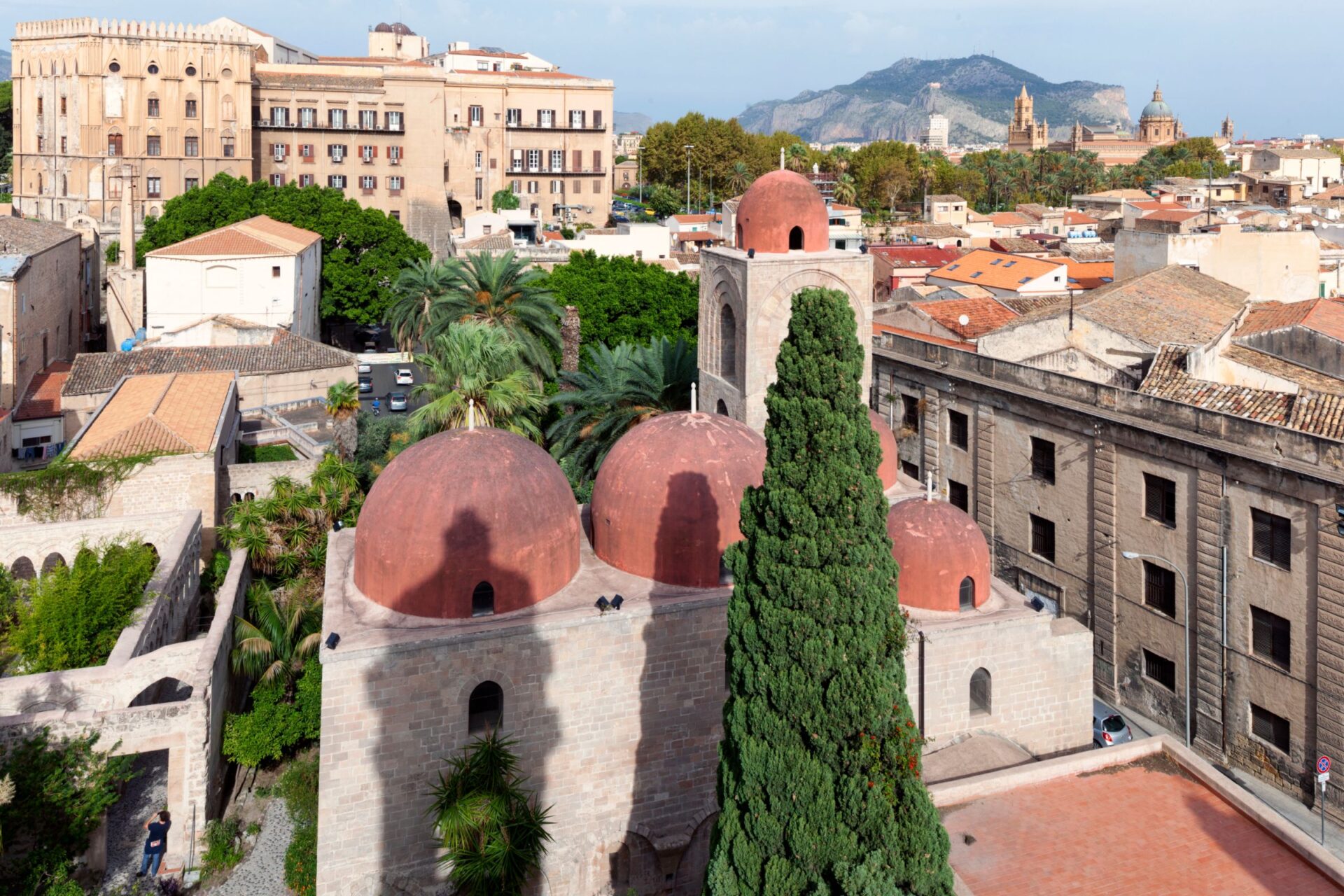
Markets like Ballarò keep the Arab souk spirit alive with their winding alleys and vendors calling out their goods.
Arab rule often meant religious tolerance. Different faiths lived side by side, setting up Palermo as a place where diverse traditions could thrive.
The Norman Conquest and Its Enduring Legacy
In 1072, Norman conquerors led by Robert Guiscard and Roger I took Palermo. Instead of wiping out Arab influence, they embraced it, creating a wild cultural fusion.
Roger II, the most famous Norman king, spoke Arabic and hired Muslim scholars. He worked Islamic art into Norman buildings.
The Palatine Chapel in the Norman Palace stands out as a symbol of this blend—Byzantine mosaics, Arabic arches, and Norman construction all in one spot.
William I and William II kept up this tradition. Their courts mixed Arab, Greek, and Norman officials, and the architecture from this era is like nothing else in Europe.
The Norman kings set up a political system that let different communities keep their own laws and religious practices. It’s an early example of multicultural governance, if you ask me.
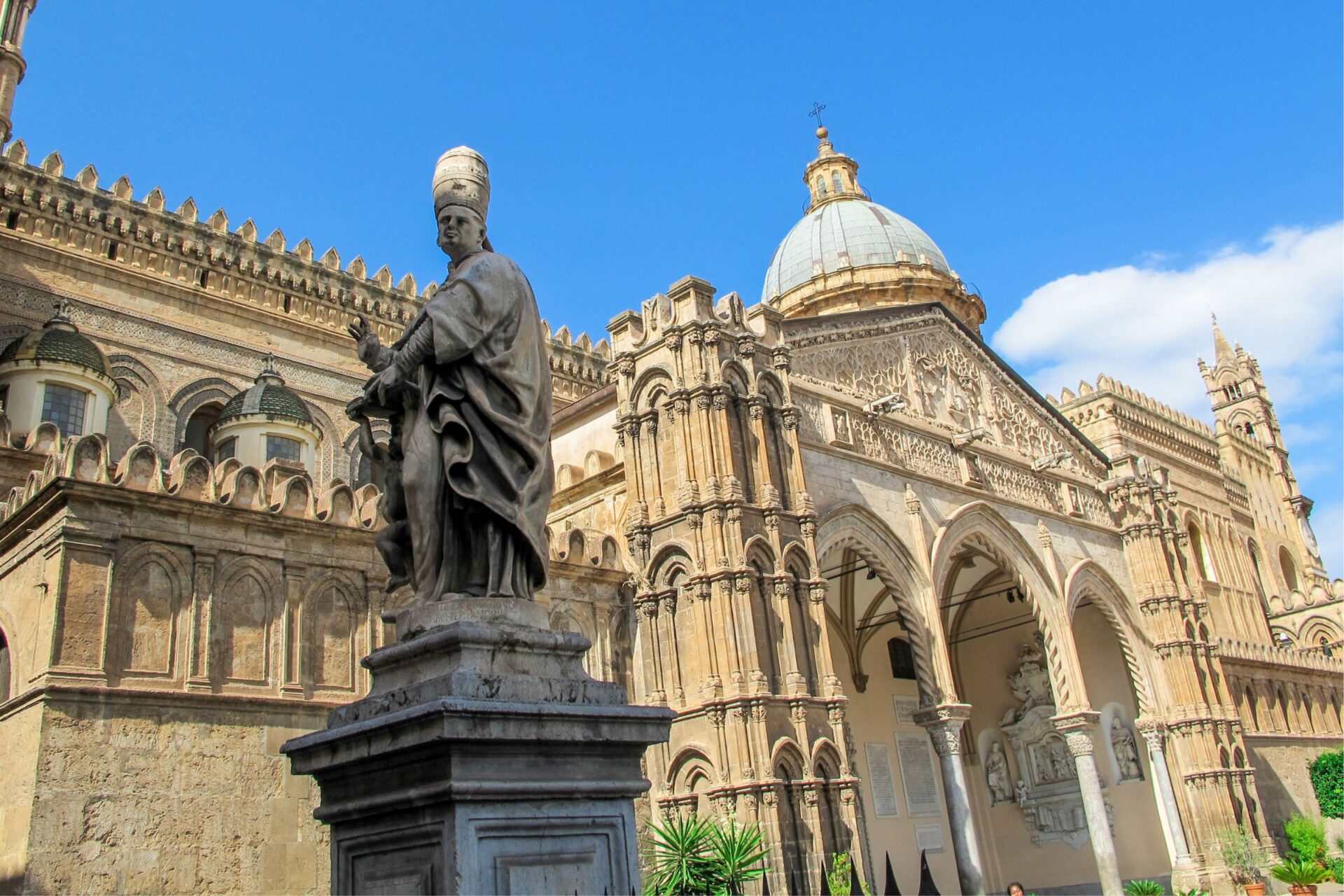
Spanish and Baroque Periods
After a few more changes in rulers, the Spanish took over Palermo in the 15th century. They brought Renaissance and Baroque influences that transformed the city’s look.
I love wandering Palermo’s streets and stumbling across ornate Baroque churches and palaces. The Quattro Canti, that striking octagonal square, really shows off the Spanish flair for theatrical city planning.
Noble families rose during this time, building grand palaces and supporting the arts. Spanish administrators introduced new systems and left cultural marks from their vast empire.
The Spanish era added another layer to Palermo’s identity. The city picked up Spanish traditions but kept its own spirit, making the culture even richer.
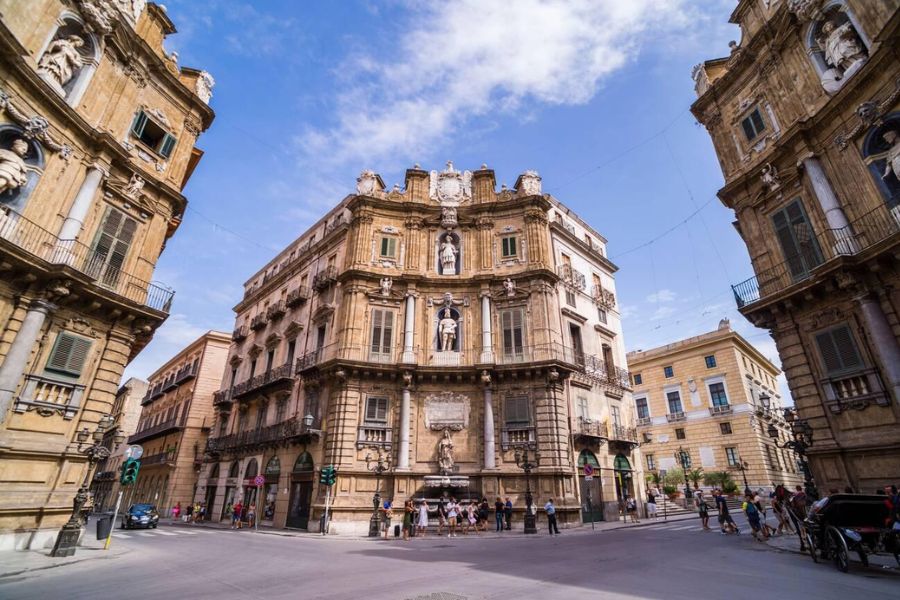
Arab-Norman Architectural Treasures
Walking around Palermo feels like flipping through an architectural storybook. Arab, Norman, and Byzantine styles mix in ways you just don’t see elsewhere.
These Arab-Norman buildings are honestly some of the most fascinating cultural mashups I’ve come across anywhere.
Arab-Norman Architecture and UNESCO Heritage
The Arab-Norman style took off in the 12th century when Norman rulers started weaving Islamic art into their buildings.
In 2015, UNESCO recognized nine of these structures in Palermo and nearby cities as World Heritage Sites.
What blows me away is how innovative these buildings are. You get northern European height mixed with Islamic patterns and Byzantine gold mosaics.
The result? A style you won’t find anywhere else.
I can’t get enough of the distinctive red domes topping so many of these sites. They pop against the Palermo skyline, little reminders of the city’s multicultural past.
These buildings really show off Sicily’s place as a cultural crossroads, where civilizations collided and then created something new.
Palermo Cathedral and the Piazza del Duomo
The first time I saw Palermo Cathedral, I just stopped in my tracks. This huge building is a wild mix of styles, thanks to centuries of renovations.
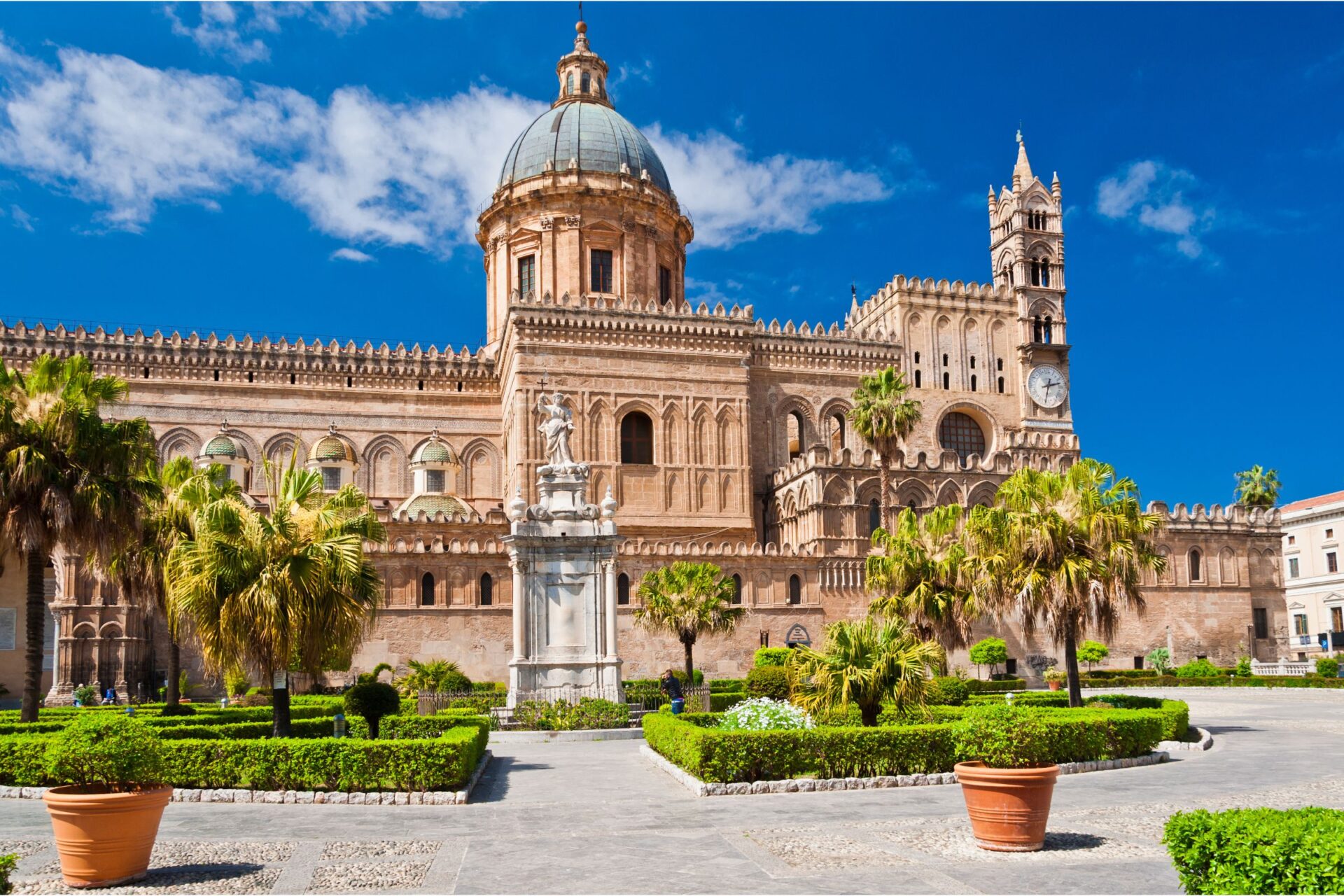
The outside screams Norman influence with its towers and arches. I spent ages just circling it, picking out new details each time.
Inside, the vibe shifts. The royal tombs hold Frederick II and other Norman rulers who shaped Sicily.
The cathedral’s layout mixes Christian needs with Islamic techniques, all working together in one space.
The Piazza del Duomo around the cathedral is the perfect spot to sit and take it all in. I found some cozy cafés nearby—nothing beats a cappuccino with that view in the morning light.
Palazzo dei Normanni and the Cappella Palatina
The Palazzo dei Normanni, or Norman Palace, houses Sicily’s regional parliament these days. But back in the day, Norman kings ruled from here.
This place mixes fortress-like defenses with plush royal rooms.
The real gem inside is the Cappella Palatina (Palatine Chapel). I honestly think it’s the best example of Arab-Norman-Byzantine fusion anywhere.
Walking in, I was floored by the golden mosaics covering almost every inch.
The chapel’s wooden ceiling shows off Islamic muqarnas (those honeycomb patterns), while Byzantine mosaics tell Christian stories. The Christ Pantocrator image in the dome just grabs your attention.
What really got me was how these styles don’t just sit side by side—they actually make each other better. The Palatine Chapel is medieval multiculturalism at its finest.
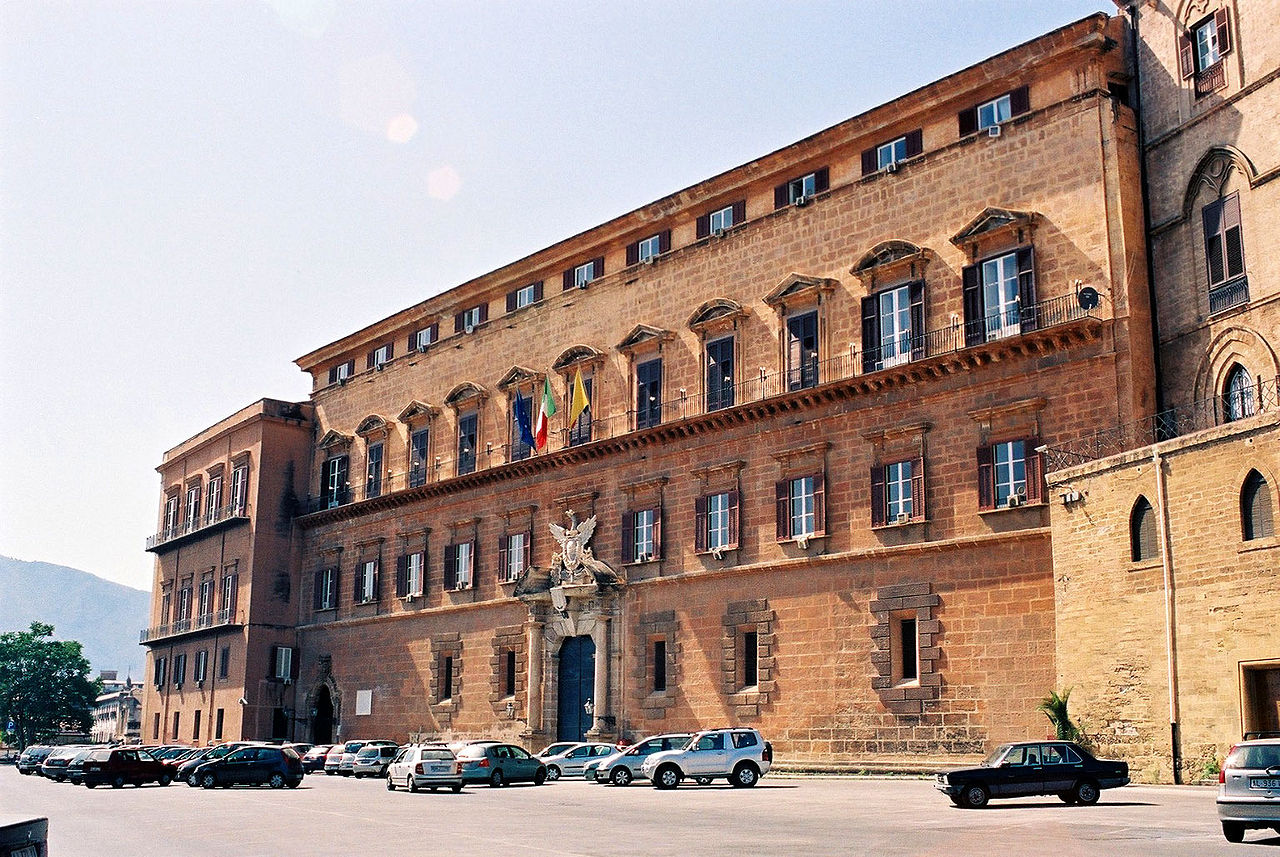
Image Source: Wikimedia Commons
Santa Maria dell’Ammiraglio and Piazza Bellini
Piazza Bellini hides the church of Santa Maria dell’Ammiraglio, or La Martorana. George of Antioch, a Greek admiral in the Norman navy, built it in 1143.
This church is a masterclass in blending cultures.
Inside, you’ll find some of Sicily’s oldest and most beautiful Byzantine mosaics. I could stare at those glowing golden images for hours.
Right next door stands San Cataldo, with its iconic red domes. Together, these buildings are the perfect showcase of Arab-Norman architecture in one square.
Piazza Bellini is small, which makes it easy to get up close to these architectural treasures. Try visiting in late afternoon—the sunlight really brings out the colors.

Icons Beyond Palermo: Legacy in Surrounding Cities
Sicily’s cultural patchwork stretches far beyond Palermo. The Arab-Norman influence pops up all over the island, shaping architecture and traditions that still define Sicilian identity.
The Monreale Cathedral and Its Golden Mosaics
A quick drive from Palermo brought me to the stunning Monreale Cathedral. Built in the 12th century by William II, it might just be the best example of Arab-Norman style in all of Sicily.
Inside, I couldn’t believe the 6,500 square meters of golden mosaics showing biblical scenes. Byzantine craftsmen created these masterpieces, making this one of the largest collections of Byzantine mosaic art anywhere.
The cloister next door has 228 columns, each with its own carved capital. I spent ages checking out the details and spotting the Islamic-inspired patterns.
La Zisa and Other Norman Palaces
Outside Palermo’s center, La Zisa stands as a gorgeous summer palace. The name comes from the Arabic “al-Aziz” meaning “splendid.”
Walking its halls, I could picture the Norman kings who hired Arab architects for their royal retreats.

The palace’s muqarnas vaulting and central fountain room are straight out of Islamic design. La Zisa is just one of several pleasure palaces that once dotted the countryside.
Other palaces worth seeing:
- Cuba Palace: Once surrounded by a huge artificial lake
- Uscibene Palace: Known for its elaborate water systems and gardens
- Favara Castle: Where defensive design meets luxury living
These buildings show how Norman rulers didn’t just borrow Arab aesthetics—they ran with them.
Syracuse, Catania, and Agrigento’s Shared Heritage
Traveling around Sicily, I kept spotting echoes of Palermo’s cultural fusion in other cities.
Syracuse, once the Mediterranean’s top Greek city, layers Greek, Roman, Byzantine, Arab, and Norman influences in its old town of Ortygia.
In Catania, the black lava stone buildings caught my eye. Mount Etna’s eruptions gave the city its unique look, which mixes with Norman and Spanish Baroque touches.
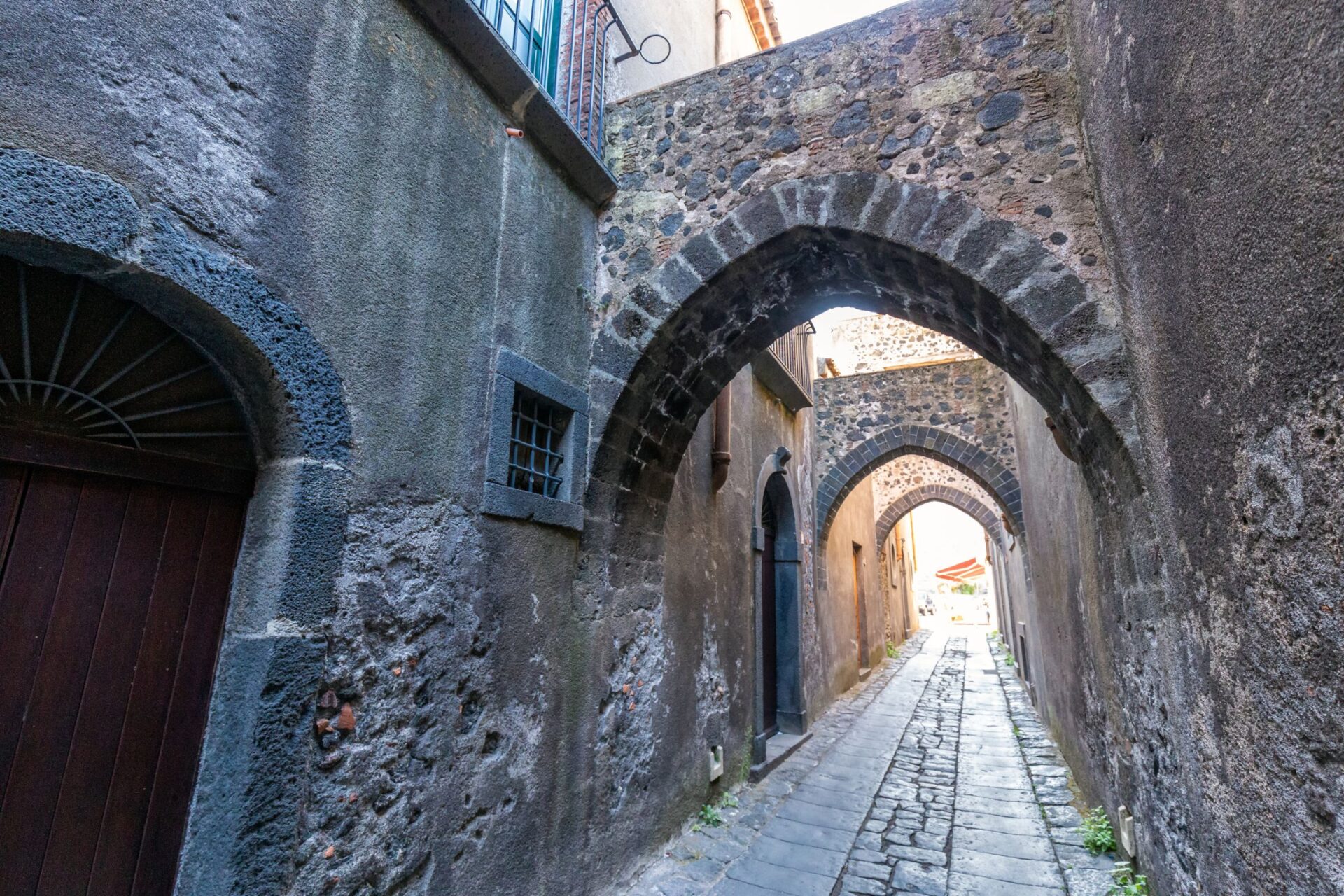
Ursino Castle, built by Frederick II, shows off Norman military smarts adapted to local conditions.
Agrigento wowed me with its Valley of Temples—ancient Greek ruins proving Sicily’s key role in the classical world. Later Arab-Norman additions make for some wild cultural contrasts.
Mount Etna’s Influence on Sicilian Culture
Mount Etna looms over eastern Sicily, shaping both land and culture. Living under Europe’s biggest active volcano has made locals pretty resilient.
The volcanic soil grows top-notch wines, especially around Etna’s slopes where the terroir is just right. Local dishes often feature ingredients like pistachios and blood oranges, all thanks to the rich earth.
Festivals here love to reference the volcano. In Catania, the Saint Agatha celebration uses candles and processions to symbolically protect the city from Etna’s power.
Markets around eastern Sicily sell crafts made from volcanic materials—black lava stone jewelry and decorative pieces are everywhere.
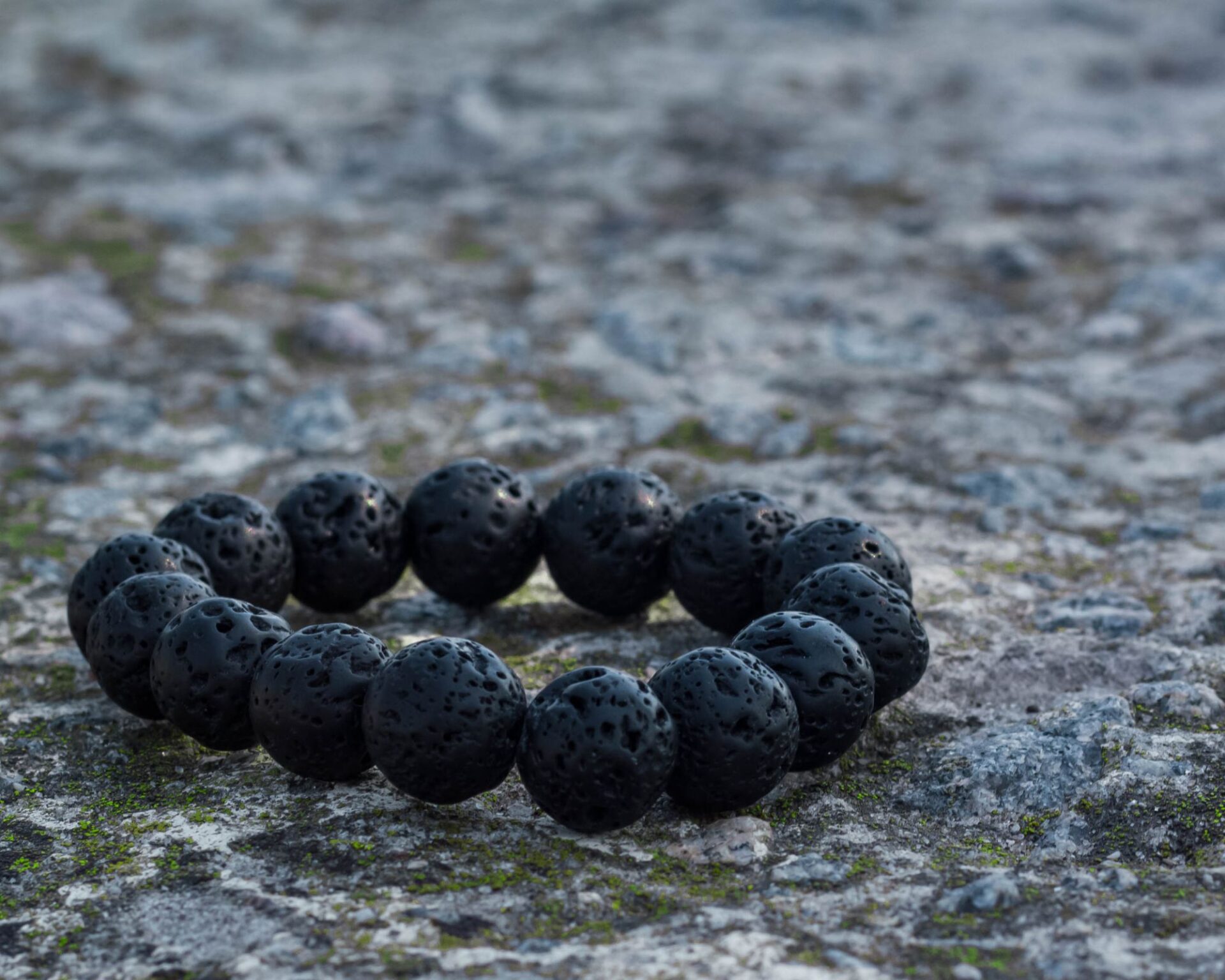
Local Life: Culture, Cuisine, and the Mediterranean Spirit
Palermo’s daily life gives you a front-row seat to Sicily’s cultural richness. The markets, museums, and festivals burst with influences that have shaped the city’s identity over centuries.
Vibrant Sicilian Cuisine and Market Traditions
Walking through Palermo’s historic markets always feels like a feast for the senses. Ballarò, Capo, and Vucciria markets buzz with life as vendors shout out what they’ve got, all in that unmistakable Sicilian dialect.
I love wandering these markets early in the morning. Locals gather, searching for the freshest produce and ingredients.
The street food scene? It’s something else—a delicious reminder that Sicily sits right at a Mediterranean crossroads. You see Arab influence in arancini (those glorious rice balls) and cassata, that sweet ricotta dessert I can’t resist.
Spanish touches sneak in too, especially in recipes with tomatoes and chocolate. It’s a blend that just works.
Sampling panelle (chickpea fritters) and pani ca’ meusa (the famous spleen sandwich) is my favorite market ritual. These bold flavors really shout about the island’s multicultural past.
Every bite tells a story—Arab, Norman, Spanish—you taste centuries of history in the food.

Museums and Artistic Heritage in Palermo
Palermo’s museums overflow with treasures that show off the city’s rich artistic story. The Regional Archaeological Museum holds one of Italy’s most impressive collections of ancient artifacts.
Stepping into Palazzo Abatellis, home to the Regional Gallery, I felt genuinely stunned. “The Triumph of Death,” that haunting medieval fresco, made me stop in my tracks.
This museum nails it when it comes to displaying how different cultures have left their mark on Sicilian art.
If you’re into modern stuff, check out GAM (Gallery of Modern Art). It’s tucked inside a beautifully restored complex and features works by Sicilian artists alongside national gems.
You shouldn’t miss the smaller museums either. The Puppet Museum lets you peek into the world of Opera dei Pupi, the traditional Sicilian puppet theater. It’s a UNESCO-recognized tradition that’s still alive today.
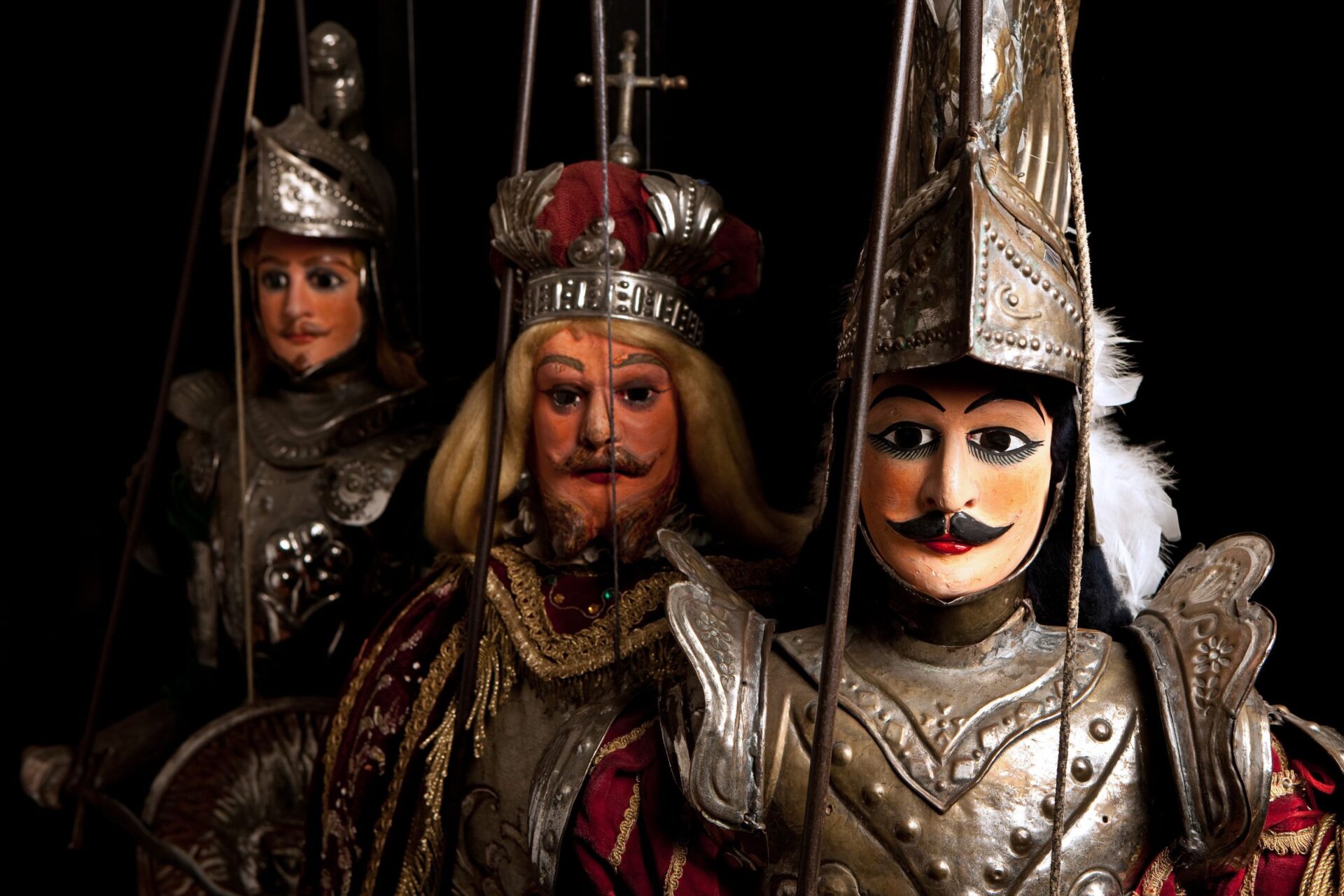
Festivals, Dance, and Religious Celebrations
Palermo’s cultural life really revolves around the religious calendar. Holy Week processions before Easter bring solemn parades winding through those narrow, ancient streets.
I got lucky and caught the Festa di Santa Rosalia in July. It’s Palermo’s biggest religious celebration, and the city completely transforms.
They honor their patron saint with a massive procession, concerts, and fireworks that light up the night.
All year long, Palermo throws all sorts of cultural events. The Teatro Massimo, Italy’s largest opera house, puts on world-class opera and ballet.
Street festivals break out too, where dancers perform the tarantella in colorful traditional costumes. It’s lively, it’s loud, and it’s pure Sicily.
Many of these celebrations blend religious devotion with ancient traditions. The result? Uniquely Sicilian spectacles that mix solemnity and joy.
That blend, honestly, captures the Mediterranean spirit that makes Palermo so unforgettable.
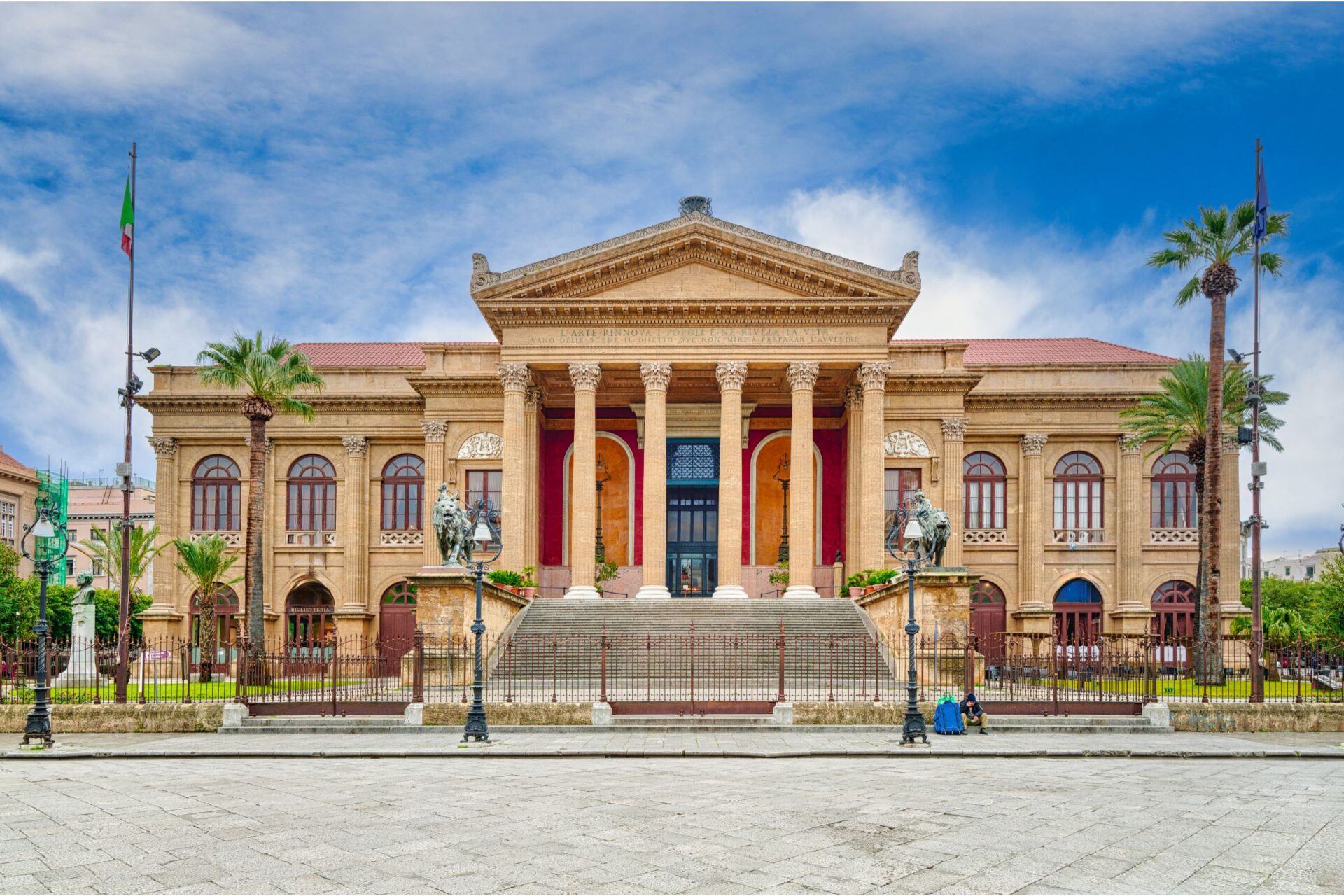
Modern Palermo: A Gateway to Sicily’s Best Travel Experiences
Palermo today offers travelers so much more than historic sites. The city acts as a perfect base for exploring Sicily, from golden beaches to rugged mountains.
Exploring Mondello and Palermo’s Beaches
Just a quick bus ride from the city center, I stumbled upon Mondello Beach—a true slice of Sicilian paradise. The turquoise water and soft white sand almost made me forget I was near a bustling city.
In summer, this beach turns into a playground for locals and tourists. I spent hours lounging under bright umbrellas, watching Italian families soak up the sun.
If you want somewhere quieter, you’ll find smaller beaches along Palermo’s coastline. Sferracavallo feels more authentic, and the seafood restaurants serve whatever came in off the boats that day.
May and September are the sweet spots—warm weather, fewer crowds. Grab a granita and watch the sun melt into the Mediterranean. It’s hard to beat.
Hiking, Outdoor Adventures, and Summer Holidays
Palermo makes a fantastic launchpad for nature lovers. Monte Pellegrino, which Goethe once called “the most beautiful promontory in the world,” has hiking trails with killer views of the city and sea.
I spent a day trekking up those slopes, passing by the Sanctuary of Santa Rosalia. The panoramic view at the top? Absolutely worth every step.
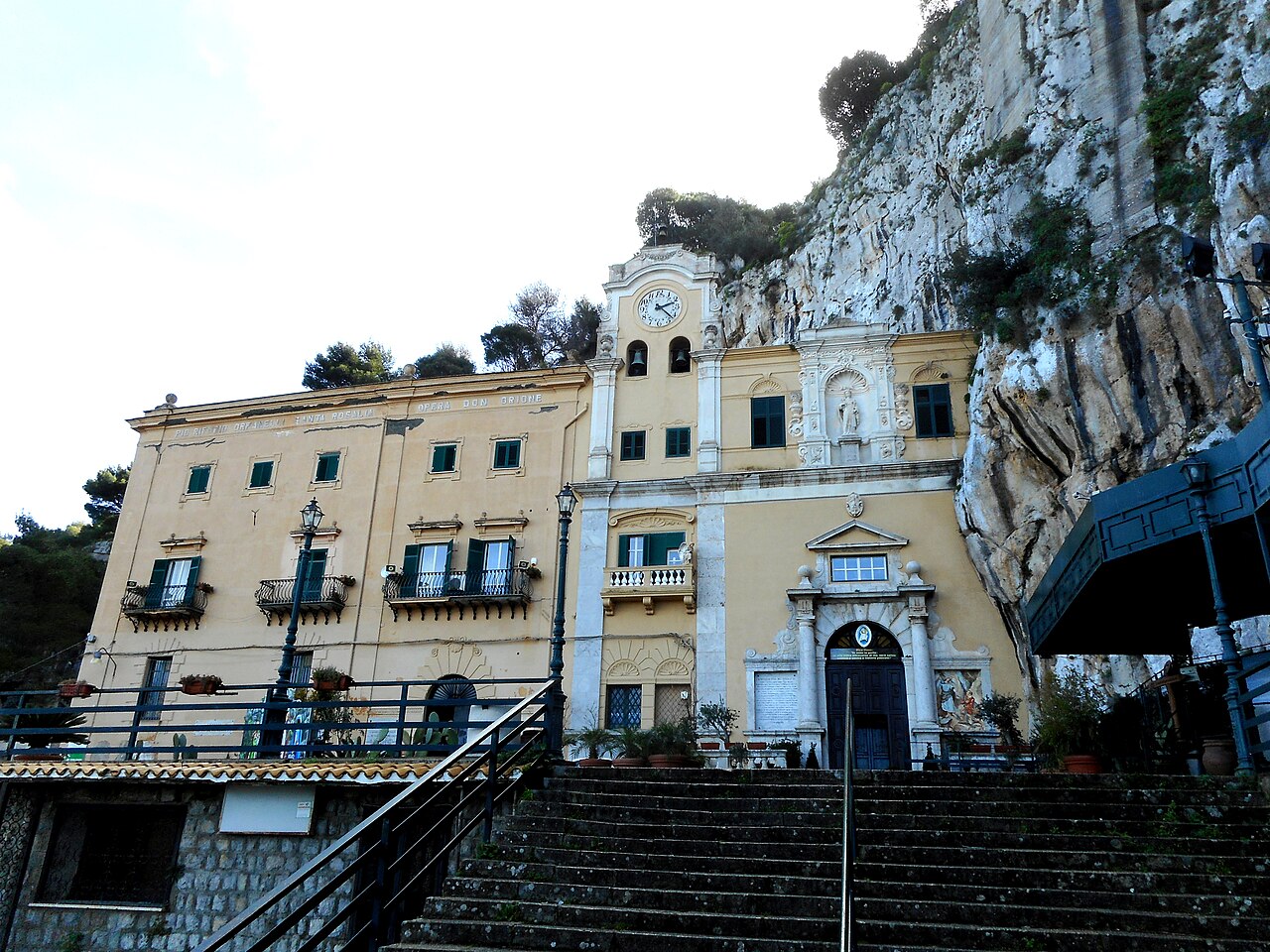
Image Source: Wikimedia Commons
If you’re feeling adventurous, Madonie Natural Park isn’t far. It offers challenging hikes through forests and mountains.
In winter, you can even ski with the Mediterranean in the background. That’s something you don’t get every day.
Summer in Palermo strikes a nice balance between city exploring and nature escapes. Renting a car lets you reach natural reserves like Zingaro, where pristine coves wait for you—if you’re willing to walk a bit.
Tips for Exploring Palermo’s Multicultural Neighborhoods
You really get a sense of Palermo’s cultural mix by wandering through its unique neighborhoods. Ballarò market bursts with African influences—vendors call out as they sell everything from spices to sizzling street food.
La Kalsa grabbed my attention right away. This old Arab quarter winds through narrow alleyways that suddenly open onto quiet, hidden piazzas.
The architecture here? It’s a wild blend, showing off centuries of cultural exchange.
If you want to see modern Palermo in action, check out Vucciria. The place used to be just a market, but now it’s a lively nightlife spot.
I spent an evening there, sipping aperitivos with locals and a handful of travelers from all over Europe.
A few quick tips for exploring these neighborhoods:
- Safety: Most spots feel safe during the day, but I’d ask locals which areas to skip after dark.
- Language: Pick up a few Italian phrases. Many younger Palermitans know some English, but a little effort goes a long way.
- Transportation: Try the hop-on-hop-off bus for a quick overview, then roam around on foot.
- Food: Definitely taste street food like arancini in each neighborhood—the flavors change from place to place.

